Coronavirus: Scott Morrison vows to fight back as jobless rate rises
Scott Morrison says “there is hope” for jobs in Australia despite monthly unemployment figures reaching a 22-year high, as it’s revealed at least one person in NSW became infectious within 24 hours of contracting COVID-19.
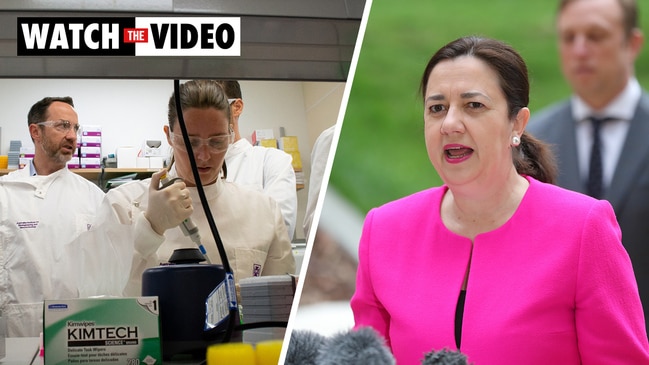
Coronavirus
Don't miss out on the headlines from Coronavirus. Followed categories will be added to My News.
The Australian economy is “fighting back” and today’s employment figures show there is “hope” despite a rise in the jobless rate, Prime Minister Scott Morrison said.
Latest labour figures from the Australian Bureau of Statistics show Australia’s June unemployment rate has risen to 7.4 per cent, a 0.3 per cent rise on the previous month.
It is the highest monthly unemployment rate since November 1998.
However, an easing of coronavirus restrictions across the nation saw 210,000 Australians re-enter the workforce, Mr Morrison said.
“Australians have been endeavouring to live with this virus and to press on, we’ve seen Australians get back into work and this has been a core objective of our approach over these past many months and it remains the focus of our approach together with managing the health situation in Victoria and other states as outbreaks and other challenges emerge,” Mr Morrison said.
He said the majority of jobs Australians had returned to were part-time roles and underemployment had also fallen through an improvement in hours.
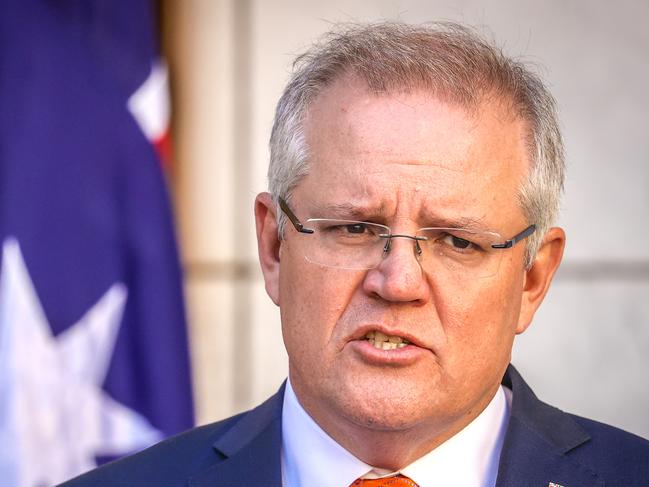
The Prime Minister said today’s employment showed “there is hope”.
“It shows we have done it before and we can do it again. We will continue to apply every resource we have available to ensure we get on top of the health situation with the virus in the foyer, and across the other states and territories,” he said.
“That is our absolute commitment but equally, we need to ensure that we don’t allow setbacks, Australians are incredibly resilient and even as we go through these difficult times, let’s lift our heads and keep looking forward.”
Mr Morrison, appearing alongside Employment Minister Michaelia Cash, also announced the $2 billion JobTrainer program created with $500 million in federal funding that is to be matched by the states.
“This funding will support the creation of in excess of 340,000 new training places, and the key to this announcement is that we will work with the national skills commission and state and territories to ensure that the training that is being funded is in areas of demand,” Senator Cash said.
COVID-19 STRIKES WITHIN 24 HOURS
At least one person became infectious within 24 hours of contracting coronavirus, it’s been revealed.
Giving an update this afternoon, deputy chief medical officer Professor Michael Kidd said the instance was unusual but not impossible.
“We have received some additional advice from New South Wales about at least one person who appears to have become infectious within 24 hours of being infected with COVID-19,” Prof Kidd said.
“The advice from infectious disease experts and the AHPPC is that while this is unusual, it is not implausible.
“There is a wide distribution in the incubation period for COVID-19 and the time that people become and remain infectious. People usually develop symptoms within five to seven days of infection but may be infectious one or two days before the symptoms develop.
“As we see large numbers with COVID-19 infected, in Australia, we are starting to see examples of people with early infectivity.”
He said it is unlikely the virus has changed to develop a short incubation period.
“We think it is unlikely the strain has changed but what we think is how it is expressed in individual people.”
‘BIG STEP FORWARD’: NEW HOPES FOR VACCINE
Vaccine experts have described as “enormously good news” reports that a leading US COVID-19 vaccine produced virus killing antibodies in all people in a clinical trial.
Many of the 45 people given the vaccine produced by US company Moderna made more virus killing antibodies against the infection than those who caught the actual virus.
Dr Paul Griffin the principal investigator and medical director of Nucleus which is conducting clinical trials of two other COVID-19 vaccines said results showing the Moderna vaccine was safe was “a really big step forward”.
“I think that’s huge. What we really need though is data that shows that people that have been vaccinated get significantly lower rates of infection than those that haven’t been,” he said.
Dr Griffin, who is conducting clinical trials of COVID-19 vaccines produced by US company Novovax and the University of Queensland, said none of the 180 vaccines in development had yet proved they could prevent people getting infected with coronavirus.
Australian National University epidemiologist Professor Peter Collignon said the Moderna trial results were “promising”.
“There was an immune response with antibodies produced which is good but still a lot of work and studies are needed,” he said.
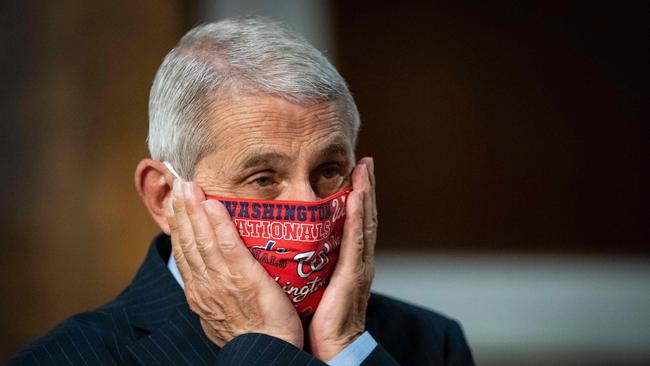
The Moderna trial — reported in the New England Journal of Medicine — showed it took a second injection, four weeks after the first, before the vaccine produced a noteworthy immune response.
And some people given a very high dose of the vaccine developed severe flu-like symptoms.
American Ian Haydon, who took part in the trial, told CNN he had a raging temperature, vomited and fainted after the second dose of the vaccine.
But the 29-year-old, from Seattle, said he did not want his experience to deter people from vaccines.
The higher 250 microgram dose of the vaccine, which he received, will not be used in future trials.
The most common adverse events following second 100 microgram dose were fatigue (80 per cent), chills (80 per cent), headache (60 per cent) and muscle pain (53 per cent), all of which were mild and did not last long.
Moderna was the first company to start clinical trials of a COVID-19 vaccine on March 16 and on Wednesday became the first to report peer-reviewed clinical trial results in a medical journal.
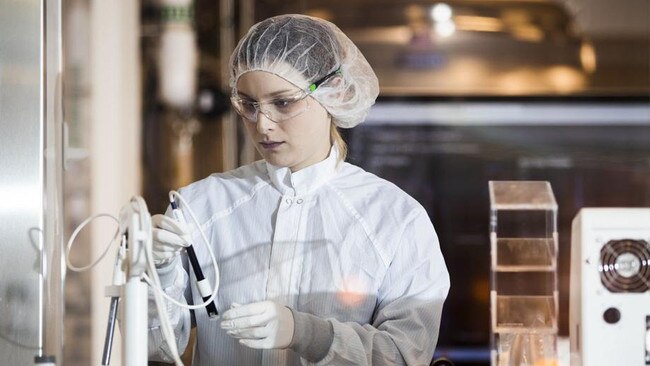
MORE NEWS
Safest way to make a DIY face mask
Aussie prison mum hires Corby’s bodyguard
How you can benefit from UK-Aus free trade deal
The Moderna vaccine is a new type of vaccine that uses mRNA to instruct cells to make proteins that mimic the outer surface of the coronavirus.
The body recognises these proteins as a foreign invader and mounts an immune response.
Anthony Fauci, director of the National Institute for Allergy and Infectious which conducted the trials said “the data really look quite good.”
It is not yet known how long antibodies produced by the vaccine will protect against infection or how high they need to be to prevent a person getting infected.
Other vaccines against different coronaviruses failed after they were found to produce a worse case of the disease in people who caught the virus despite being vaccinated.
A trial to test whether the vaccine actually prevents the virus will begin later this month.
If successful, Moderna plans to deliver between 500 million and one billion doses of the vaccine from its US manufacturing site in 2021.
To supply overseas markets the company has a deal with Spanish-based pharmaceutical manufacturer ROVI.
Australia does not currently have a deal with Moderna for any manufacturing.
AUSSIE TOURISM INDUSTRY ‘TO LOSE 200,000 JOBS’
The shutdown of Australia’s international borders will cost the country at least 200,000 jobs in its tourism sector, according to new research.
And Sydney and Melbourne will be the hardest hit by the downturn.
The Australian reported exclusive analysis by top consulting house McKinsey exploded the idea that the nation’s fourth-largest export industry would be insulated by the global travel freeze.

“Australia is one of the few countries globally that are net exporters of tourism, meaning that Australians spend more on overseas holidays than international tourists spend here,” said McKinsey partner Simon Kennedy.
International visitors account for half of tourist spending in Sydney and Melbourne, making those cities the likely big losers from border closures.
But smaller boutique domestic holiday destinations stand to benefit, as well-off Australians swap Aspen for Byron Bay. Other winners could include Tasmania’s wilderness or the Barossa Valley, where only about 20 per cent of visitors come from overseas.

“Even if you assumed Australians took the same amount of leave and substituted all of their international trips with domestic holidays, only two-thirds of the total tourism spend would be replaced, as on average domestic holidays are significantly cheaper per day,” Mr Kennedy said.
“If the average length of domestic holidays remained unchanged, they would need to increase their daily spending sixfold to make up for the loss, which we think is unlikely.’’
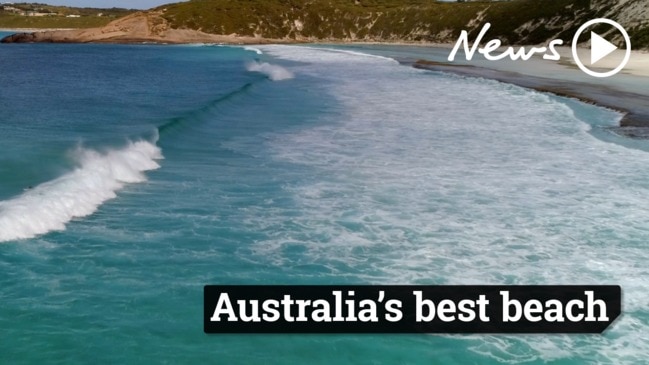
The tourism sector sustained more than 900,000 jobs last year but faces the loss of nearly $40bn — almost a quarter of its total income — with the closure of Australia’s international borders.
“Increased domestic travel by Aussies is likely to be a boon for local gems like the NSW north coast and the Mornington Peninsular, but not much help for the NT and Cairns,” Mr Kennedy said.
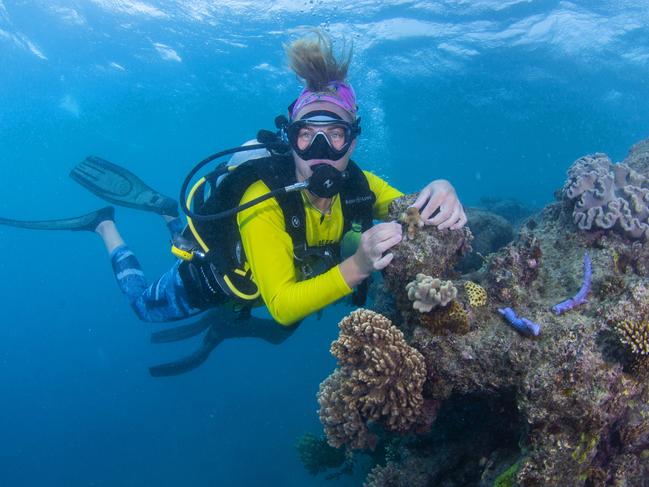
“Australians spend the majority of their holiday budget on locations that get less than a third of their revenue from international tourists.’’
The Australian reports that Mr Kennedy said social distancing would add to the losses. His analysis suggests a further 7 per cent loss of income as social distancing rules crimped tourist operators, and another 3 per cent owing to the hit to household incomes from the recession. “Even if Australians were persuaded to holiday like they’re seeing Australia for the first time, the realities of the coronavirus crisis will make it difficult to do so,” he said.

Mr Kennedy said the tourist sector should brace for “tough times ahead” and many workers would be “especially reliant on Jobseeker once JobKeeper ends later this year’’.
Even before governments shut all travel, international visitors had fallen 28 per cent in the March quarter, and spending was down 27 per cent, or $3.9bn, according to Tourism Research Australia.
